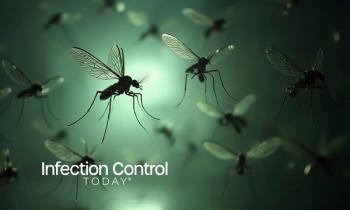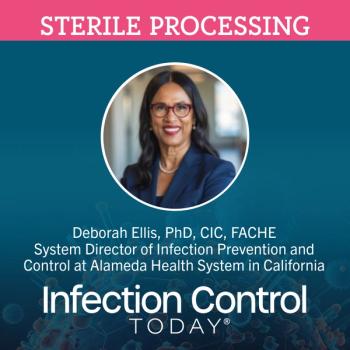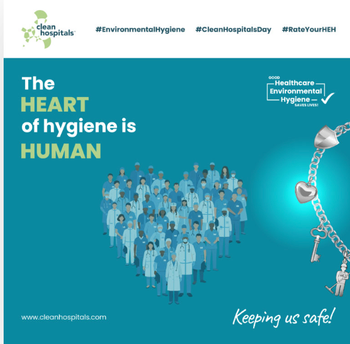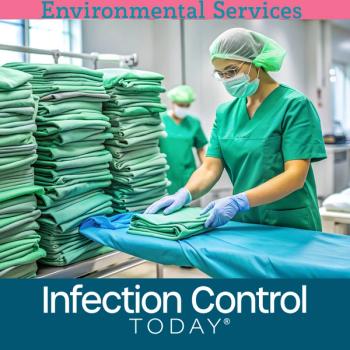
Beyond the Surface: Rethinking Environmental Hygiene Validation at Exchange25
Environmental hygiene is about more than just shiny surfaces. At Exchange25, infection prevention experts urged the field to look deeper, rethink blame, and validate cleaning efforts across the entire care environment, not just EVS tasks.
At the Association for the Health Care Environment (AHE) 2025 Education and Solution Summit, held in Columbus, Ohio, from June 8 to 11, a panel of seasoned
Rebecca Battjes, MPH, CIC, FAPIC; Vidya Nankoosingh, MLT, CIC; and Peter Teska, MBA, brought together decades of clinical and scientific expertise to address a recurring concern: the tendency to rely on a single method of hygiene validation, such as Adenosine triphosphate (ATP) testing, fluorescent marking, or visual inspections.
“We're looking at different methods to validate your environmental hygiene program. Are you truly cleaning and disinfecting the surfaces that you hope to?” Battjes, who is an infection prevention senior clinical adviser, North America for Diversey, A Solenis Company.
Each method, the speakers noted, has strengths and weaknesses, and no single tool offers a complete picture of cleanliness. The panel encouraged organizations to adopt a multimodal approach, much like the broader practice of infection prevention, which always incorporates multiple data sources to draw reliable conclusions.
“Our main takeaway that we hope people get from our session is to expand their current thinking and not place all their trust in one validation method, switch it up, kind of like we do in infection prevention and control,” Battjes said. “We don't just look at one measurement. We look at a lot of different things to measure the success of our facilities program.”
One of the most common pitfalls discussed is the over-reliance on environmental services (EVS) staff to manage all aspects of cleaning, especially during outbreaks or cluster events. According to the presenters, outdated guidance and limited literature have reinforced the idea that EVS is the primary line of defense in disinfection. In reality, shared and portable medical equipment often plays a significant role in pathogen transmission, and these items are typically handled and cleaned by clinical staff, not EVS personnel.
“[Much] of the portable medical equipment is moved around on a daily basis, rather than staying with a patient through until discharge,” Teska said. He is a global infection prevention application expert/healthcare sector expert for Diversey, Inc. “So, if you're not monitoring how this equipment is being moved around and you're not validating that it's being cleaned, you might be missing not just a small part of the risk, but a very large part of the risk. I think for us [the presenters], the point is to try to identify all these pieces so that EVS can talk about them and advocate for themselves.”
Additionally, the panel noted that some organizations face challenges with contractual cleaning validations. For example, facilities may be locked into using a particular method, like ATP testing, even when that method proves difficult to apply consistently or interpret meaningfully in complex clinical settings.
“Sometimes, organizations are under a contract and are being told what to use, which preserves validation, and that can be difficult because the particular method might not be easy to implement,” Nankoosingh said. She is also an infection prevention senior clinical adviser for Diversey. “And we've heard organizations that say we're being forced to use a certain type, like ATP, but we're struggling with it. So, I think going for that multimodal validation in several ways helps to make sure that your environmental hygiene program is working the way it should.”
A key message was the need for ongoing education, flexibility, and cross-departmental communication. Environmental hygiene, they argued, should be seen as a shared responsibility that spans clinical, maintenance, and EVS roles. IPs can serve as bridges, helping facilitate
Ultimately, the team urged attendees not to default to blaming EVS during outbreaks. Instead, they encouraged a systemic view that considers every individual who interacts with patient care environments, and every piece of equipment that crosses from one patient zone to another.
By shifting their focus from fault to function and from singular methods to holistic validation, infection prevention teams can better support safe and resilient care environments.
“Don't blame EVS,” Battjes said, laughing. “Please consider that if you're an IP working through an outbreak, make sure you include your entire clinical team who's touching equipment, and really look at who's truly responsible for all the equipment, and not just the EVS clean surfaces. That's something I want my colleagues in infection prevention to start focusing more on.”
Their final takeaway was simple yet powerful: when it comes to cleaning, do not just ask if it is being done, ask who is doing it, how it is validated, and whether your risk profile truly reflects the real-world complexity of care.
Newsletter
Stay prepared and protected with Infection Control Today's newsletter, delivering essential updates, best practices, and expert insights for infection preventionists.





